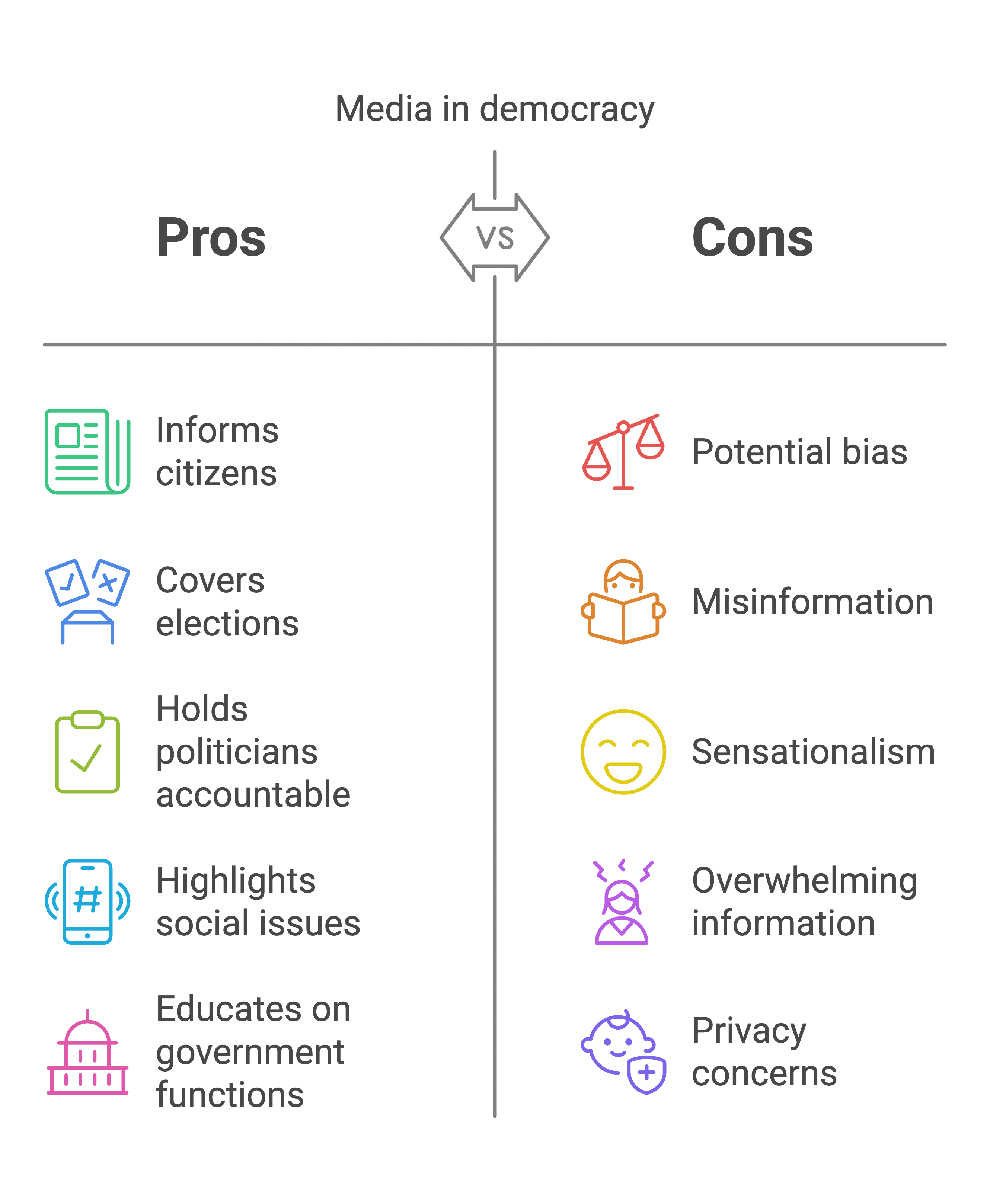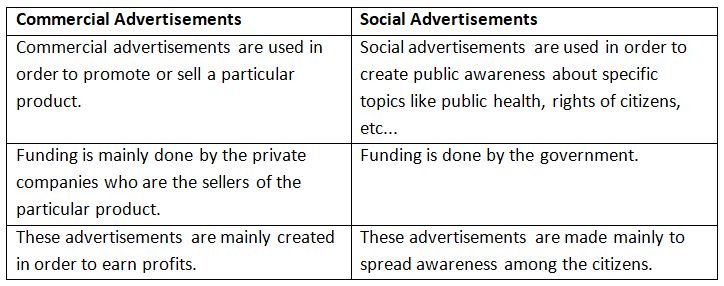NCERT Solutions for Class 7 Social Science - Understanding Media
Q1: In what ways does the media play an important role in a democracy?
Ans: Role of media in democracy:
- The media is the fourth pillar of democracy, keeping us informed about social, political, and economic activities.
- It provides news and discusses events happening both nationally and globally.
- The media informs citizens about how the government functions, it covers election news and results, helping people stay updated.
- The media amplifies public issues, holding politicians accountable for their promises.

Q2: Can you give this diagram a title? What do you understand about the link between media and big business from this diagram? Ans: The title given to this diagram is "Media and Business house money cycle". This diagram illustrates the cyclic flow of money between media and big businesses:
Ans: The title given to this diagram is "Media and Business house money cycle". This diagram illustrates the cyclic flow of money between media and big businesses:
- Media provides news of interest to the public via radio, TV, and newspapers.
- Big businesses advertise their products through media to attract consumers.
- Media displays these advertisements for a fee, generating profit.
- Consumers purchase products from big businesses, returning the costs and profits to them.
Q3: You have read about the ways in which the media ‘sets the agenda’. What kind of effect does this have in a democracy? Provide two examples to support your point of view.
Ans: The media plays a crucial role in a democracy by influencing public awareness and opinion through its ability to set agendas. This means that the media highlights certain issues, shaping what the public considers important.
- One example is the media's coverage of pesticide levels in cola drinks. Reports revealed alarming levels, prompting public concern and calls for better safety standards.
- Another instance is the extensive coverage of Fashion Week, which dominated headlines while significant events, such as the demolition of slums in Mumbai, received little attention.
Q4: As a class project, decide to focus on a particular news topic and cut out stories from different newspapers on this. Also watch the coverage of this topic on TV news. Compare two newspapers and write down the similarity and differences in their reports. It might help to ask the following questions–
(a) What information is this article providing?
(b) What information is it leaving out?
(c) From whose point of view is the article being written?
(d) Whose point of view is being left out and why?
Ans: Take two different newspapers. For example, “The Times of India” and “Hindustan Times”. Go through both the papers of the same day. Choose any particular news heading in both the papers. Also, watch the different TV Channels for this particular news heading, and answer the questions given with the help of newspaper cuttings and news watched on different TV channels.
Q5: Do projects (solo, pair, or group) about types of advertisements. Create commercial advertisements about some products and social advertisements about public health, road safety, and the need to save water and energy.
Ans: Creative Projects can be done by students according to class instructions. Difference between the two types of advertisements that can used as an aid while doing the projects.
|
63 videos|554 docs|46 tests
|
FAQs on NCERT Solutions for Class 7 Social Science - Understanding Media
| 1. What is the role of media in shaping public opinion? |  |
| 2. How does media influence the behavior of individuals? |  |
| 3. What are the different types of media? |  |
| 4. Why is media literacy important for students? |  |
| 5. How can media promote social change? |  |

















